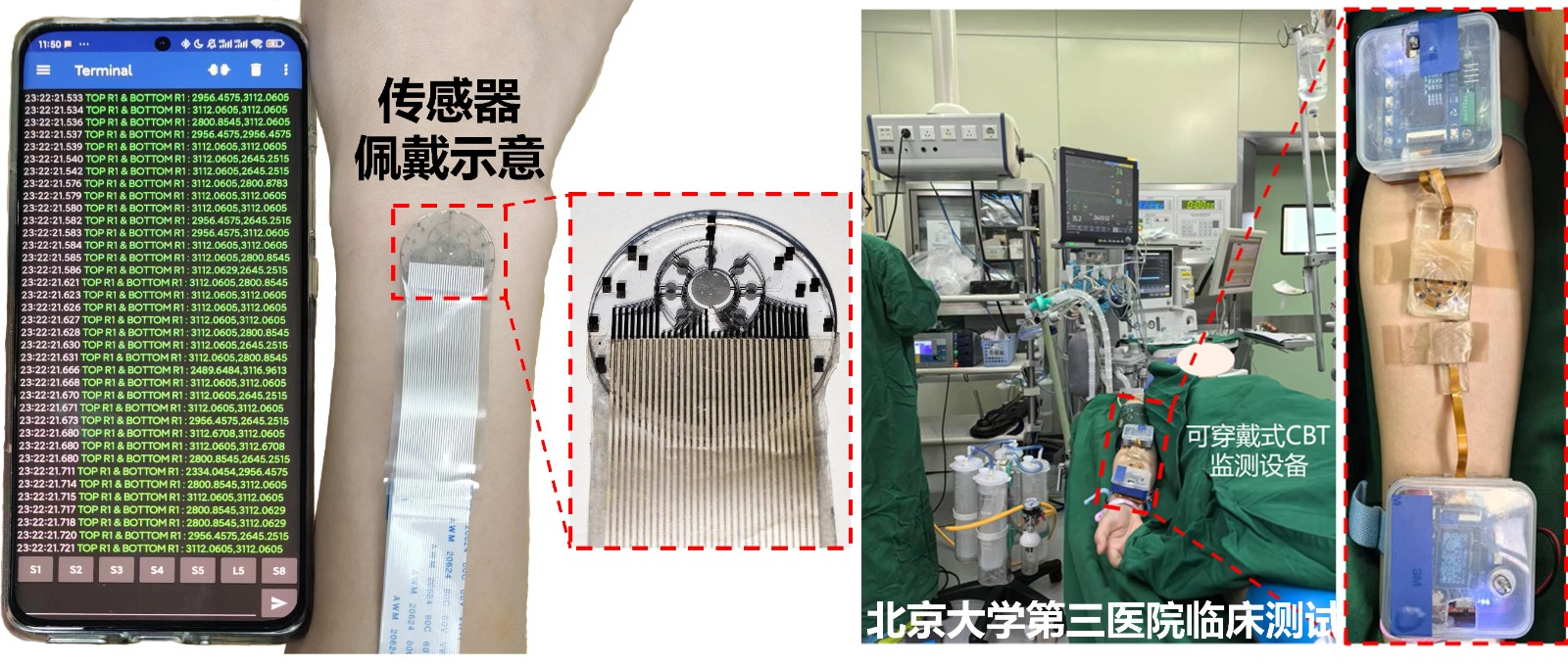Qiulin

|
- Professional Title:Professor
Supervisor of Doctorate Candidates
Alma Mater:Graguate School of Chinese Academy of Sciences
Discipline:Thermal Engineering
School/Department:School of Energy and Environmental Engineering
Business Address:Office 1107, Jidian Building, University of Science and Technology Beijing
 Contact Information
Contact Information
- ZipCode:
- PostalAddress:
- Email:
- Research Focus
Wearable sensors and devices for physiological monitoring
The thermophysical parameters of human tissue are very critical in the research and application of medical thermal science, because the thermal conductivity, thermal diffusivity, blood perfusion rate and metabolic rate are the most basic thermophysical parameters included in all kinds of biological tissue heat transfer models, which are the premise for revealing the heat transfer capacity and heat carrying capacity of biological materials and further bioheat transfer research.Because biological tissues simultaneously have solid heat conduction and blood flow heat transfer, there is also a metabolic heat source inside, and these parameters are not uniformly distributed, they change with space and even temperature, and non-invasive measurement of these parameters, especially their spatial changes are extremely difficult.Therefore, the determination of thermal properties of biological tissues, especially living tissues, is also one of the most significant topics in the field of bioheat transfer. Our team studies wearable sensors and devices compatible with human skin to quickly and accurately obtain relevant physical signs data and establish the corresponding relationship between them and the body state, so as to quickly judge or predict the health status of the human body and provide reliable and timely clinical judgment for subsequent medical programs.
(1) Flexible wearable device for monitoring skin thermal conductivity, water content and subcutaneous blood perfusion rate: Based on Pennes equation and harmonic detection principle, it can flexibly adjust the depth of thermal wave detection, so as to extract the thermal conductivity, water content and subcutaneous blood perfusion rate of skin epidermis, dermis, subcutaneous fat layer and muscle layer respectively. With a depth of 6 mm, the technology can detect signs of serious skin diseases such as psoriasis, dry skin, and eczema, compared to conventional skin diagnostic instruments that can only detect the stratum corneum (10-20 μm). Clinical tests have been carried out at Zhongnan Hospital of Wuhan University.

Video 1: Introduction to measuring skin water content by harmonic-wave method
(2) Rigid wearable device for monitoring skin thermal conductivity and water content: Based on the harmonic method layered detection principle, the thermal conductivity of the epidermis layer (within 1 mm under the skin) and dermis layer (1-3 mm under the skin) can be extracted at the same time, which can indicate the body state more accurately than the traditional method that can only reflect the overall thermal conductivity of the skin. Through a population test (30 people) showed that the epidermal thermal conductivity can reflect the movement of the human body and the change of the ambient temperature, and the dermal thermal conductivity can indicate the female physiological cycle. This research has potential application value in guiding the daily non-invasive health monitoring of human body.

(3) Rigid wearable device for continuous monitoring of core body temperaturer: A conformal wearable flexible device that can continuously monitor core body temperature and skin thermal conductivity has been developed. The device integrates temperature sensor and thermal conductivity sensor, together with wearable data processing module and wireless communication module, the device realizes continuous monitoring of core body temperature and portable monitoring of skin thermal conductivity. Due to the annular distribution design of the temperature sensor and the directional thermal conductivity design of the thermal conductivity sensor, the device has considerable accuracy and stability compared with standard instruments. Clinical tests have been carried out at Peking University Third Hospital.


Video: Non-invasive collection of core body temperature
(4) Flexible wearable device for continuous monitoring of core body temperature, skin thermal conductivity and water content: Wearable flexible devices have been developed that can continuously monitor body surface temperature, core body temperature, skin thermal conductivity and water content. With FPC technology, flexible devices with integrated temperature measurement chip and thermal conductivity sensor can be conformally attached to the human body. Combined with wearable data processing module and wireless communication module, the device can realize wireless monitoring of various health data of human body. The differentiated design of the thermal conductivity of the sensor temperature measurement channel and the separator material can restrict the heat from the body core to conduct in the direction perpendicular to the skin as much as possible during the deep temperature measurement, and significantly improve the measurement accuracy of the core body temperature.

(5) Flexible wearable device for imaging superficial skin blood flow: Based on the research on the transport mechanism of superficial blood flow to external body heat, a reliable correlation between changes in deep body temperature and changes in blood flow under external heat is established to realize blood flow imaging and blood flow monitoring of human superficial veins. The measurement accuracy and stability are verified by the synchronous population test between the gold standard instrument and the equipment.

Video: Introduction to the superficial blood flow imaging sensor
(6) Self-powered flexible wearable device for continuous deep body temperature monitoring: Combining thermoelectric devices with temperature sensing chips, it precisely and non-invasively continuously measures the heat flow of the skin and the temperature of deep tissues. Further, by taking advantage of the thermoelectric conversion characteristics, it generates electricity based on the temperature difference between the human body and the environment, driving low-power electrical loads. This work provides a new solution for promoting the functional integration and self-energy supply of wearable health monitoring devices.
Video: Introduction to Deep Temperature Detection and Power Generation Devices Based on Human Body Heat Flow

